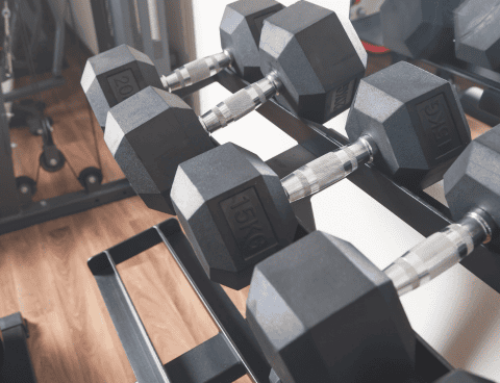6 Back Squat Variations to Challenge Your Lower Body
![]()
Most athletes should be familiar with the Back Squat. It’s one of the most basic yet effective exercises you can do. It builds strength in your hips and legs and challenges your core like few other exercises—why it’s considered “the King” of all exercises.
RELATED: A Beginner’s Guide to Back Squat Workouts
But even the strongest lifters get stuck sometimes, finding themselves unable to increase their Back Squat weight. Maybe their form breaks, or they are slow out of the hole (the bottom part of the lift). It happens to everyone who has been lifting for long enough.
In this circumstance, a little variation goes a long way. These six Back Squat variations might be exactly what you need to take your Squat to a new level.
1. Box Squat
The Box Squat is a great tool to help gauge depth and build strength from the bottom of the squat. If you’re having trouble getting deep enough, grab a box and squat until your butt touches the box, then return to the top. If you’re trying to build more strength, sit all the way down on the box before standing back up. Make sure to drive through your hips and keep your core tight throughout the lift.
RELATED: Back Squat Technique: How to Hold the Barbell
2. Anderson Squat
For this variation you need safety rails or power boxes. The Anderson Squat is essentially stopping and letting the bar rest at the bottom of the squat. It’s is a great variation to increase power from the bottom, or the weakest position of the lift, by eliminating any bounce or elastic energy used when rapidly squatting. To maintain good posture at the beginning of the Squat, start from the top position, then lower until 100 percent of the weight is supported by the rack/boxes. This is much safer and easier than trying to crawl under the bar to get into a proper position.
3. Pause Squat
The Pause Squat is a great variation that will build isometric strength in the bottom position. Increase the difficulty of this exercise by changing the pause time (1 second, 2, 3, etc).
RELATED: Are You Strong Enough to Back Squat?
4. 1.5-Rep Squats
This brutally tough variation is simply a Squat plus a half squat out of the bottom position. Your glutes and quads will be on fire, and it will challenge your metabolic system. It helps you build strength in the bottom of the rep and eliminate sticking points.
5. Banded Squats
Banded Squats help develop speed or strength. Depending on the weight of the bands, you can have a drastic change in weight from the bottom position to the top. Simply attach the bands to your bar and an anchor point on the ground (heavy dumbbells, under the rack, etc).
6. Change Foot Position
This is an easy way to change up your routine by simply changing your stance. If you only squat at neutral distance, you will only be strong at that position. Try keeping your feet closer together or widen your stance. It gives you a different feel than your normal Squat. A narrower stance requires more ankle mobility and activates the quads more, whereas a wide stance requires more hip mobility and is a little more taxing on your glutes. You don’t need to hit extremes for these to help (e.g., feet touching or as wide as possible). Just a few inches in either direction will do the trick. Also, when you do these, you might realize you are stronger or more comfortable squatting in a different position than what you are currently using.
[cf]skyword_tracking_tag[/cf]RECOMMENDED FOR YOU
MOST POPULAR
6 Back Squat Variations to Challenge Your Lower Body
![]()
Most athletes should be familiar with the Back Squat. It’s one of the most basic yet effective exercises you can do. It builds strength in your hips and legs and challenges your core like few other exercises—why it’s considered “the King” of all exercises.
RELATED: A Beginner’s Guide to Back Squat Workouts
But even the strongest lifters get stuck sometimes, finding themselves unable to increase their Back Squat weight. Maybe their form breaks, or they are slow out of the hole (the bottom part of the lift). It happens to everyone who has been lifting for long enough.
In this circumstance, a little variation goes a long way. These six Back Squat variations might be exactly what you need to take your Squat to a new level.
1. Box Squat
The Box Squat is a great tool to help gauge depth and build strength from the bottom of the squat. If you’re having trouble getting deep enough, grab a box and squat until your butt touches the box, then return to the top. If you’re trying to build more strength, sit all the way down on the box before standing back up. Make sure to drive through your hips and keep your core tight throughout the lift.
RELATED: Back Squat Technique: How to Hold the Barbell
2. Anderson Squat
For this variation you need safety rails or power boxes. The Anderson Squat is essentially stopping and letting the bar rest at the bottom of the squat. It’s is a great variation to increase power from the bottom, or the weakest position of the lift, by eliminating any bounce or elastic energy used when rapidly squatting. To maintain good posture at the beginning of the Squat, start from the top position, then lower until 100 percent of the weight is supported by the rack/boxes. This is much safer and easier than trying to crawl under the bar to get into a proper position.
3. Pause Squat
The Pause Squat is a great variation that will build isometric strength in the bottom position. Increase the difficulty of this exercise by changing the pause time (1 second, 2, 3, etc).
RELATED: Are You Strong Enough to Back Squat?
4. 1.5-Rep Squats
This brutally tough variation is simply a Squat plus a half squat out of the bottom position. Your glutes and quads will be on fire, and it will challenge your metabolic system. It helps you build strength in the bottom of the rep and eliminate sticking points.
5. Banded Squats
Banded Squats help develop speed or strength. Depending on the weight of the bands, you can have a drastic change in weight from the bottom position to the top. Simply attach the bands to your bar and an anchor point on the ground (heavy dumbbells, under the rack, etc).
6. Change Foot Position
This is an easy way to change up your routine by simply changing your stance. If you only squat at neutral distance, you will only be strong at that position. Try keeping your feet closer together or widen your stance. It gives you a different feel than your normal Squat. A narrower stance requires more ankle mobility and activates the quads more, whereas a wide stance requires more hip mobility and is a little more taxing on your glutes. You don’t need to hit extremes for these to help (e.g., feet touching or as wide as possible). Just a few inches in either direction will do the trick. Also, when you do these, you might realize you are stronger or more comfortable squatting in a different position than what you are currently using.
[cf]skyword_tracking_tag[/cf]











